Marvel’s Black Panther is a 2018 live-action film based on the 1966 character created by the late Stan Lee and Jack Kirby saw the late Chadwick Boseman don the Black Panther suit and defend his home of Wakanda, a technologically advanced civilization hidden away from the rest of the world in the depths of Africa, from those who seek to exploit it. The film, which grossed over $1.366 billion in revenue at the box office, became the first superhero film to be nominated for Best Picture at the Academy Awards and Marvel’s first film to win an Academy Award. With a plethora of nominations and numerous victories, Black Panther joins the exclusive list of superhero films that have a Black protagonist. However, there has never been a film centered around a Black protagonist on the same level of production as Black Panther. Films such as the 1993 film the Meteor Man and the 1997 film Steel, were not widely regarded as “good” movies and offered very little substance in terms of plot and character development. These films, while offering representation for Black people in the superhero genre, were poorly written and only garnered attention for the big names, such as NBA superstar Shaquille O’Neal (Steel) and Halle Berry (Catwoman) that were cast in them.
As the face of media becomes more culturally diverse, avid comic book fans have seen more productions that involve Black superheroes such as the Netflix series Luke Cage and CW’s Black Lightning. Recently, filmmaker Reginald Hudlin announced at a DC FanDome panel that there is serious discussion surrounding the development of a live-action film centered on the DC comic book character “Static” also known as Virgil Hawkins, a Black teen living in Detroit who developed the ability to manipulate electricity after surviving a chemical explosion. The news was positively received by fans who felt that the 2000 cartoon series “Static Shock” was wrongfully canceled due to poor merchandising sales.
While anxious fans await the official release for the “Static” movie, the new Phase 4 and Phase 5 live-action films and Disney+ shows of the Marvel Cinematic Universe (MCU) will satiate fans for the time being. Projects such as the remastered Blade movie, starring Mahershala Ali, and the series The Falcon and the Winter Soldier, starring Anthony Mackie, and the upcoming Black Panther sequel will bring Black superheroes more to the forefront of the genre, in league with age-old favorites such as Iron Man and Thor.
As the superhero movie genre diversifies, I have compiled a list of some Black superheroes that I would love to see hit the big screen or even have their own series. This list is definitely not exhaustive as there are many long-forgotten superhero characters, especially Black ones, that never made it past their initial comic book debuts, but I do believe that the characters in this list have amazing stories that will make for even better films or television series.
CYBORG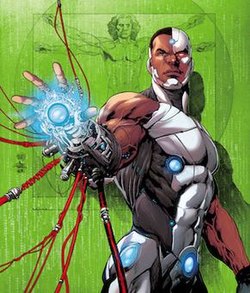
Cyborg, also known as Victor Stone, is a character created by DC Comics writer Marv Wolfman and artist George Perez. He first appeared in an insert in the 1980 issue of DC Comics Presents #26. His origin story is revamped in the DC’s 2011 reboot of its comic books but both versions follow a similar sequence of events.
Victor Stone is the son of scientists Silas and Elinore Stone, who work with interdimensional technology for S.T.A.R labs. An accident caused an interdimensional creature to invade S.T.A.R labs, kill Elinore and severely maim Victor. In an effort to save his son’s life, Silas utilized all the S.T.A.R. technology at his disposal to replace his severed limbs and damaged organs. In the original timeline, Victor is shunned by society for his new body and finds solace with a group of other outcasts and forms the Teen Titans under the leadership of Dick Grayson, former sidekick to Batman.
However, in the DC Comics reboot, Cyborg is a founding member of the Justice League, teaming up with Green Lantern, Flash, Wonder Woman, Superman, Batman, and Aquaman to defeat Darkseid and his army of Parademons. His character first appeared on the big screen as a cameo in the 2016 film Batman vs Superman: Dawn of Justice, following the DC Comics New 52 reboot timeline solidifying Cyborg as a founder of the Justice League. Talks have always surrounded a Cyborg live-action film however, its actor, Ray Fishburn, offers some insight as to why production has not made significant progress. As opposed to his counterparts, Cyborg is a hero made almost entirely of machinery. Rather than constructing a suit from fabrics and prosthetics, Cyborg came alive through a motion capture suit and creating the suit via CGI. Just to create the costume, DC Studios are looking at upwards of $200 million. This becomes a big numbers game, considering the cost of creating the movie may be too steep a budget. However, a Cyborg movie will surely garner a lot of attention, especially fans of the Teen Titans comics, and bring in a large amount of revenue if executed adequately. The story of Cyborg, while maintaining heroism on the surface, grapples with the ongoing fight between Victor’s fading humanity and his ever-growing cybernetic persona. This film will greatly resonate with the present climate of technology becoming ever more ingrained in our society.
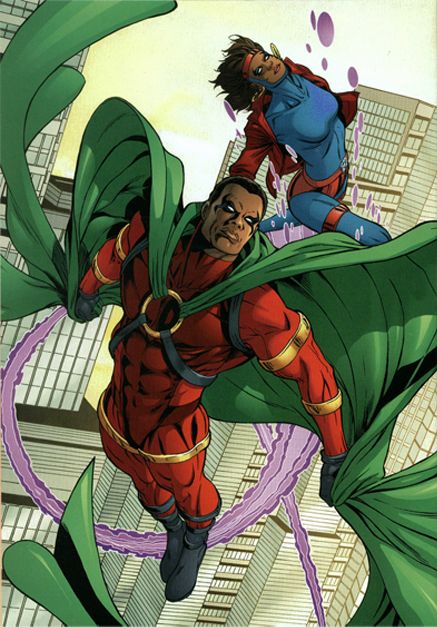 ICON AND ROCKET
ICON AND ROCKET
Icon was created by Dwyane McDuffie and MD Bright for Milestone Comics, a company published through DC Comics. and first appeared in 1993 comic Icon #1.
Icon, also known as August Freeman IV, is an alien named Arnus that was stranded on Earth when his spaceship crash-landed in the American South in 1839. In order to help its pilot blend into the environment, the spaceship altered Arnus’ appearance to match the first sentient life that discovered him. This was an enslaved Black woman, named Miriam, who adopted Arnus as her son. Fast forward to the 20th century, Arnus is still alive, physically maintaining the appearance of an adult man. To preserve his identity, he regularly assumes the role of his own son, currently operating as a lawyer as August Freeman IV, the great-grandson of his original identity. While he possesses superhuman abilities, such as flight, superhuman strength, and speed, he lives his life quietly, characterized as “by the book” member of society.
One night, his home is broken into by a group of teens prompting him to use his powers for the first time in decades. One of the teens, a Black girl named Raquel Ervin, witnesses August use his powers and encourages him to become a full-fledged superhero. He dons the moniker Icon and grants Raquel a belt that uses the same technology of his spaceship and grants her the ability to manipulate kinetic energy. While Icon takes on a lot of the physical load of their partnership, the series main protagonist is actually Raquel as she is the one who spurs Augustus to become more involved in the racial injustice that plagues Dakota City.
The characters represent a sort of bridging between the older, conservative August and the younger, progressive Raquel, and how they come together to battle the implicit and explicit ongoings of racism in their city. While the characters may have originally existed solely in the Dakotaverse independent of the overall DC Universe, the defeat of Darkseid opened up the existence of multiple timelines eventually merging the two. The repaired continuity places Icon and Rocket in the new DC Extended Universe and connects them with the likes of Superman. While there are no official statements released on if there was a movie in production, an Icon and Rocket movie will be a great movie that directly addresses race relations, growing distrust of the government, and how young Black people are the catalyst for change
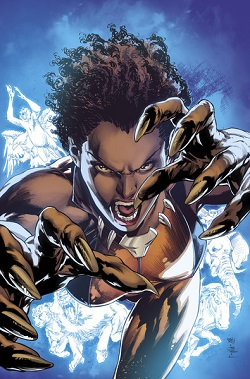
VIXEN
Vixen, also known as Mari Jiwe McCabe, was created by Gerry Conway and Bob Oksner for DC Comics and first appeared in the 1981 Action Comics #521. She was slated to become the first African female superhero to star in her own series but the first issue of her series was canceled among many others in an event known as the DC Implosion of 1978. Her origin story, however, is one that needs to be told.
The legend of the Tantu Totem starts with the ancient Ghanaian warrior Tantu asking the spider Anansi to grant him a totem that allowed the bearer to possess all the powers of the animals in the animal kingdom under the condition that the totem’s power can only be used to protect the innocent. The totem is passed down to Tantu’s descendants until it finds itself among the McCabe family. Mari is born in the fictional village of Zambesi and hears of the totem from her mother who is later murdered by poachers. Mari is then raised by her father who later also dies at the hands of his half-brother, General Makasi. Mari eventually flees to America where she assumes the identity of Mari McCabe and finds newfound fame and fortune as a supermodel. She takes a trip back to her home town and finds her uncle to be in possession of the totem. She is able to take the totem from him and dons the costumed persona of Vixen to fight evil. While her character does very little on her own, she appears in several team-up comics. In one issue she works with the Justice League to fight and defeat Amazo, in another, she works with the Suicide Squad to dismantle a Caribbean criminal enterprise and in yet another, she teams up with the all heroine super-team, The Birds Of Prey.
While very little is done in the comic to develop her own story, what we have already creates a great stage for a film to rival Marvel’s Black Panther. The origin stories share several similarities but the added layers of womanhood, the bridge between American and African belief systems, and an acknowledgment of crime that occurs outside of US borders will bring new perspectives to the DC Extended Universe on the big screen.
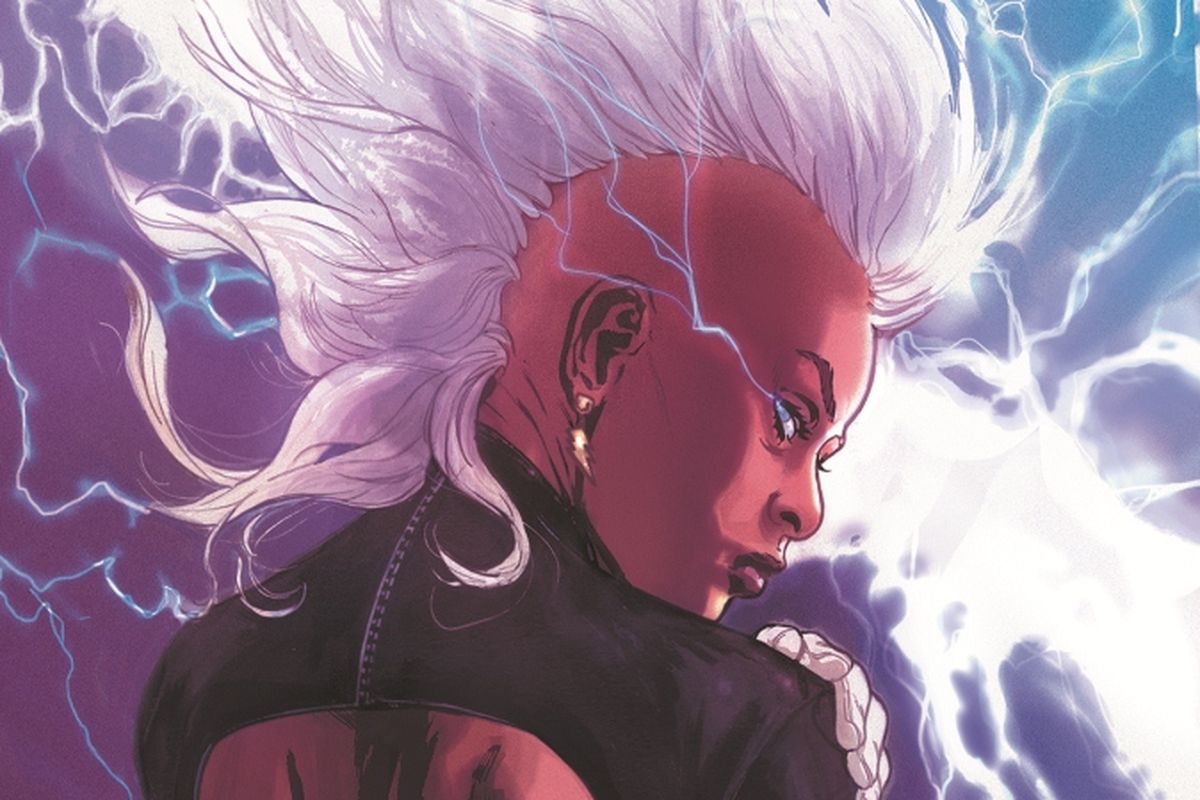 STORM
STORM
Storm is a character that was created by Len Wein and Dave Cockrum for Marvel Comics and first appeared in the 1975 comic Giant-Size X-Men #1.
Avid readers of Marvel comics, especially the X-Men series, are quite familiar with the character as she becomes an integral member of the team and vital to much of their success. Storm, with her long flowing white hair, sometimes in an edgy mohawk, sometimes in long tresses, captivated audiences with her sheer awesomeness but has yet to have her own solo film. Storm, also known as Ororo Munroe, was born in New York City to a Kenyan princess, N’Dare, and American photographer, David Munroe. When she was six months old, her family moved to Cairo, Egypt. At the tender age of five, a plane crashed into their home, killing both her parents leaving Ororo orphaned. She began to live on the streets of Cairo, eventually becoming a skilled thief and pickpocket to ensure her survival. During her teenage years, she wanders into the Serengetti and it is there that her dormant mutant abilities to control the weather start to manifest themselves. She is taught to control her powers under the guidance of the witch priestess Ainet and she is later revered as a goddess by an African tribe. She operates as the village’s protector and deity until she is recruited by Charles Xavier to join the X-Men and given the code name “Storm”.
She appears in several live-action X-Men movies and is most notably one of the most famous characters to date, being the first black female superhero to play either a major or supporting role in both DC and Marvel. However, she has yet to receive her own live-action film. The cultural significance of Storm is too vast to not make this a reality. And with a backstory like that, Marvel needs to start production as soon as possible.
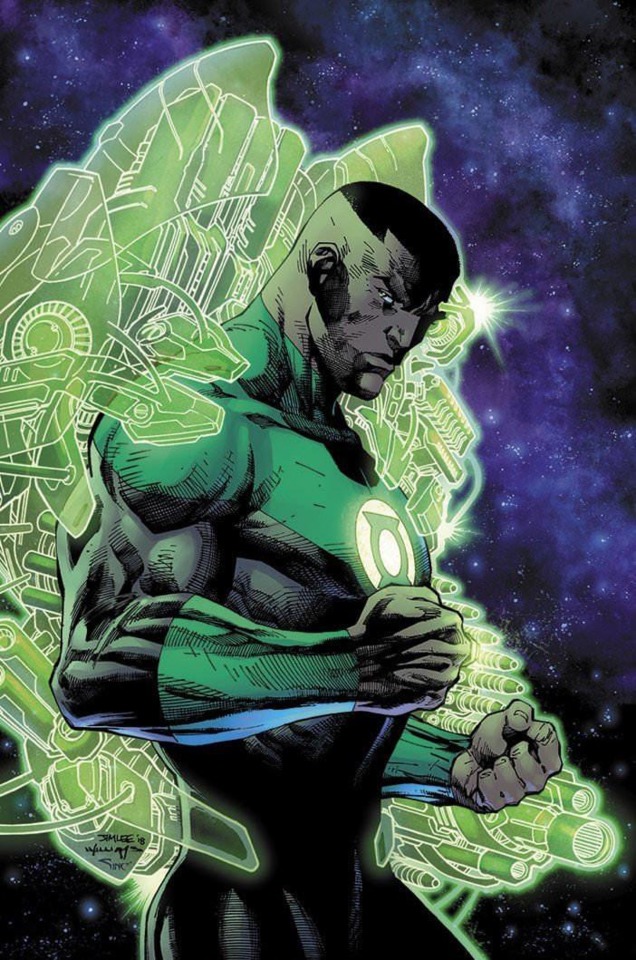 JOHN STEWART (GREEN LANTERN)
JOHN STEWART (GREEN LANTERN)
John Stewart was created by Dennis O’Neil and Neal Adams and first appeared in the 1971 comic Green Lantern (Volume 2) #87. He became DC Comic’s first Black superhero.
Hal Jordan stumbled upon a crashed ship and found a dying member of the Green Lantern Corps, an intergalactic space patrol organization that seeks to fight evildoers across multiple galaxies. The dying member, in his final moments, bestowed upon Jordan the Lantern power ring, the symbol of the Corps, and the source of immense power, granting him the ability of flight, generation of hard light constructs, and creation of force fields. When it was time to look for a successor, the Guardians instructed Jordan to find and train John Stewart, a Black ex-Marine from Detroit, Michigan. Stewart was starkly different from Jordan as he held very little regard for the racist authorities that presided over his city and was often very abrasive in his manner to achieve his goals.
However, Stewart proved his righteousness, and he and Stewart became long friends. During his tenure as Green Lantern, he filled in for Jordan on numerous assignments until he became the sole Earth Green Lantern following Jordan’s retirement. While Hal Jordan already has his own live-action film, played by Ryan Reynolds, the movie was a commercial failure as Reynold’s usual comedic relief was lost on audiences used to reading Hal Jordan as a more stoic character. In addition, while Hal Jordan was the first Earth Green Lantern, John Stewart is by far more popular amongst fans. John Stewart’s growth from a wise-cracking, stubborn man to a wise and brave leader while staying true to exposing the evils of society, especially that which operates in authority, will surely resonate with younger audiences in this day and age who are growing resentment for the age-old way of doing things
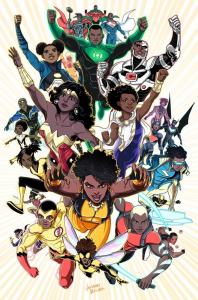
Images Courtesy of Marvel Comics and DC Comics











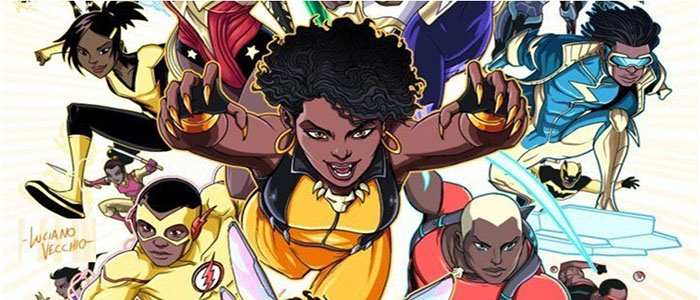

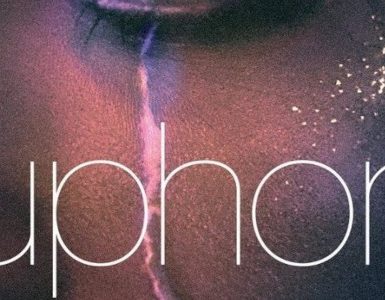
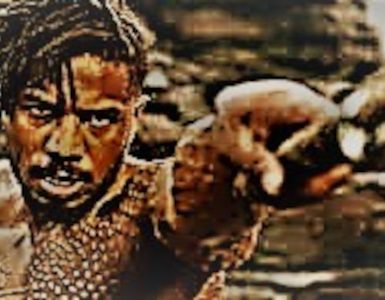



Omg! I never knew I needed this. #TeamVixen